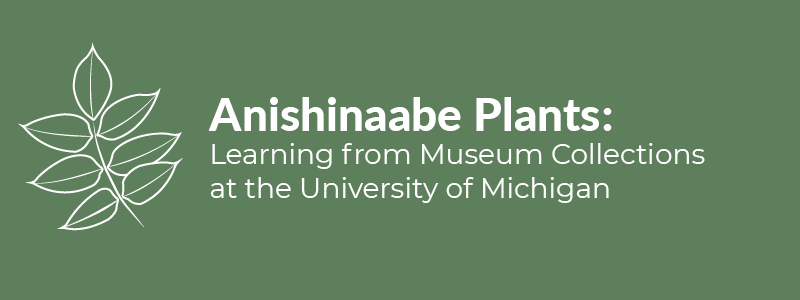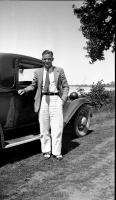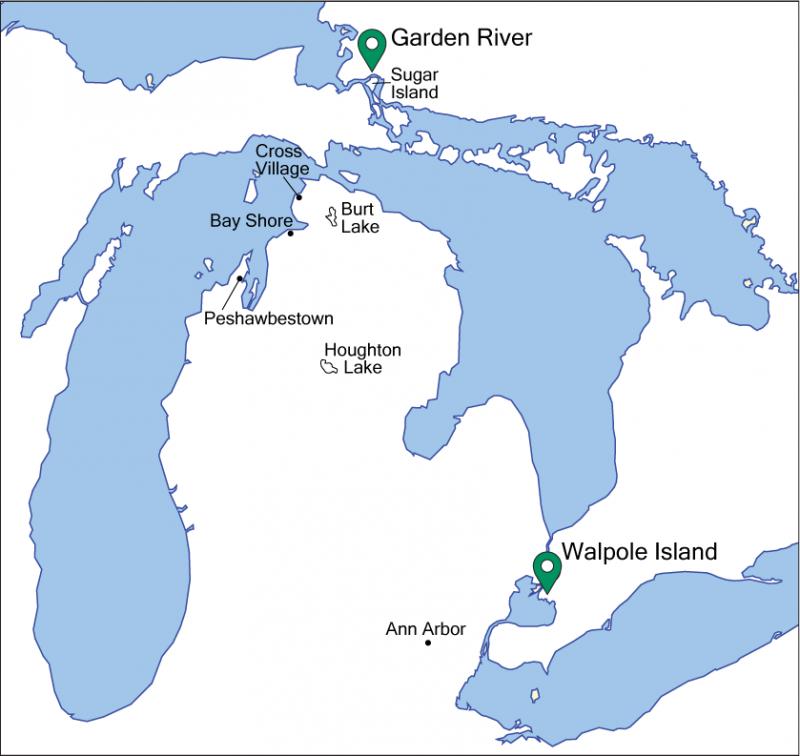Volney Jones and the 1933 Textile Project
In 1931, Volney Jones was hired to assist Dr. Gilmore in the Ethnobotanical Laboratory. Jones had extensive training in botany and had conducted research with Indigenous communities in the American Southwest.
Jones received a Master's degree in biology from the University of New Mexico. His thesis examined the plant knowledge of farmers from the Pueblo of Isleta, which is located south of Albuquerque, New Mexico. In the introduction to his thesis, Jones stated that his goal was to understand “the reciprocal relation between the Isleta Indian and his plant environment.” He argued that this type of ethnobotanical study was urgently needed because much of this knowledge was “being buried” with the elders who had grown up in the second half of the 19th century.
During the fieldwork for his thesis, Jones began to developed methods that he continued to refine in his subsequent projects with Indigenous communities. In some cases, Jones collected plant specimens that he asked community members to identify and to tell him about their uses. He, however, found that community members shared more detailed information with him when interviews were conducted in the places where the plants grew and their answers were more spontaneous when multiple community members were present. Jones also conducted interviews throughout the growing season to ensure that he collected information on seasonally available plants and plants at various stages in their growth cycle.
The Great Lakes Textile project
In the summer of 1933, Jones conducted a study of the plants used by Indigenous communities in the Great Lakes region to make textiles (e.g., baskets and mats). He documented the entire process of manufacture, from the harvesting and preparation of the plants to weaving techniques. For the Museum, Jones collected plants at various stages in the manufacturing process, textiles in the process of manufacture, and finished pieces.
Using what he learned during his fieldwork at the Pueblo of Isleta, Jones recruited basket makers and weavers who were willing to show him the entire manufacturing process. He kept detailed notes on the plants used, their preparation, weaving techniques, and the people who he observed. Although he noted that he was not comfortable using a camera, he did take photos of the manufacturing process. The detail and care that Jones took in documenting the knowledge of the people who made the items that he collected make his work nearly unique among museum collections, which primarily focus on finished objects.
Jones also used a technique that anthropologists call “participatory observation.” He describes the importance of this participation on page 4 of his unpublished report about the project:
At times the writer attempted to perform the actual processes themselves so that points of technique which might be overlooked would be observed. The relative ease and difficulty of techniques apparently of equal simplicity is readily determined in this manner. Incidentally, an appreciation of the art is also gained.
The Anishinaabe Communities Jones Visited
Jones travelled to many Anishinaabe communities in Michigan and neighboring Ontario, starting on Walpole Island in July, 1933, where he interviewed families who made black ash and sweet grass baskets, as well as mats made from rush, hickory, and corn husks. He documented the techniques used to make black ash baskets through interviews with several community members and collected 75 items for the Museum.
In late July, Jones visited communities in northern Michigan, starting with Peshawbestown and traveled to Green Sky Hill, Bay Shore, Good Hart, Cross Village, Burt Lake, Houghton Lake, and Sugar Island. At this time of year, people in these communities were busy with farm activities, especially harvesting cherries. Although he was able to talk to a few people about the techniques they used to make baskets, his opportunities for observation were limited because basket making primarily occurred in the winter months in these communities. He did not collect any items for the Museum during this part of his travels.
Although Jones found several members of each community who were willing to work with him, he did encountered some who were reluctant. His field notes suggest that he was respectful of these wishes. To illustrate, he described Mrs. J. W. Pine as "one of the older women at Garden River and very familiar with the old time techniques [of weaving], but is very shy and non-communicative." Jones noted that Mrs. Pine had a very large twilled-weave cedar rug in her home, which she told him she had woven years before. Based on comments he made in his 1948 article (see Resources), Jones asked Mrs. Pine if she would show him how she made the rug and make one for him to purchase. She declined his offer. Although reluctant to be interviewed, she did tell Jones that she had instructed several younger women in the community about mat making, including Mary Belanger.
After the 1933 Project, Jones revisited many of the Anishinaabe communities, wrote about the items that he collected, and even planted some of the corn from Walpole Island.


